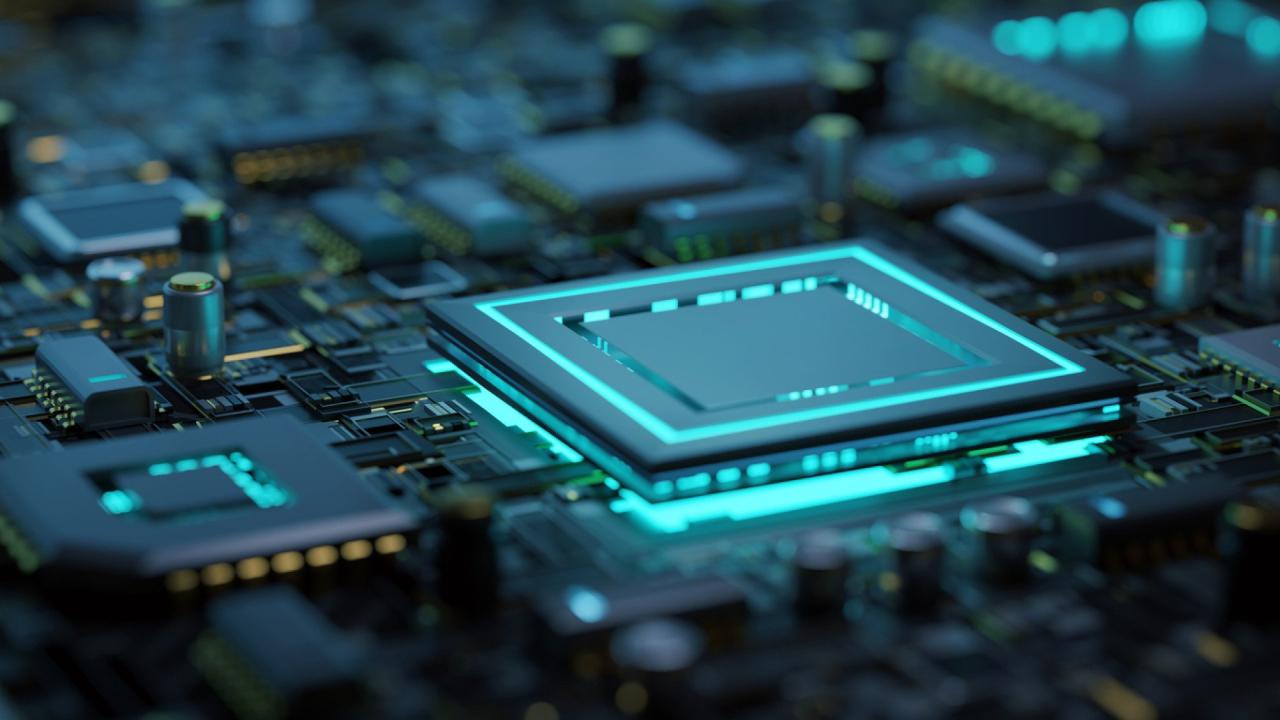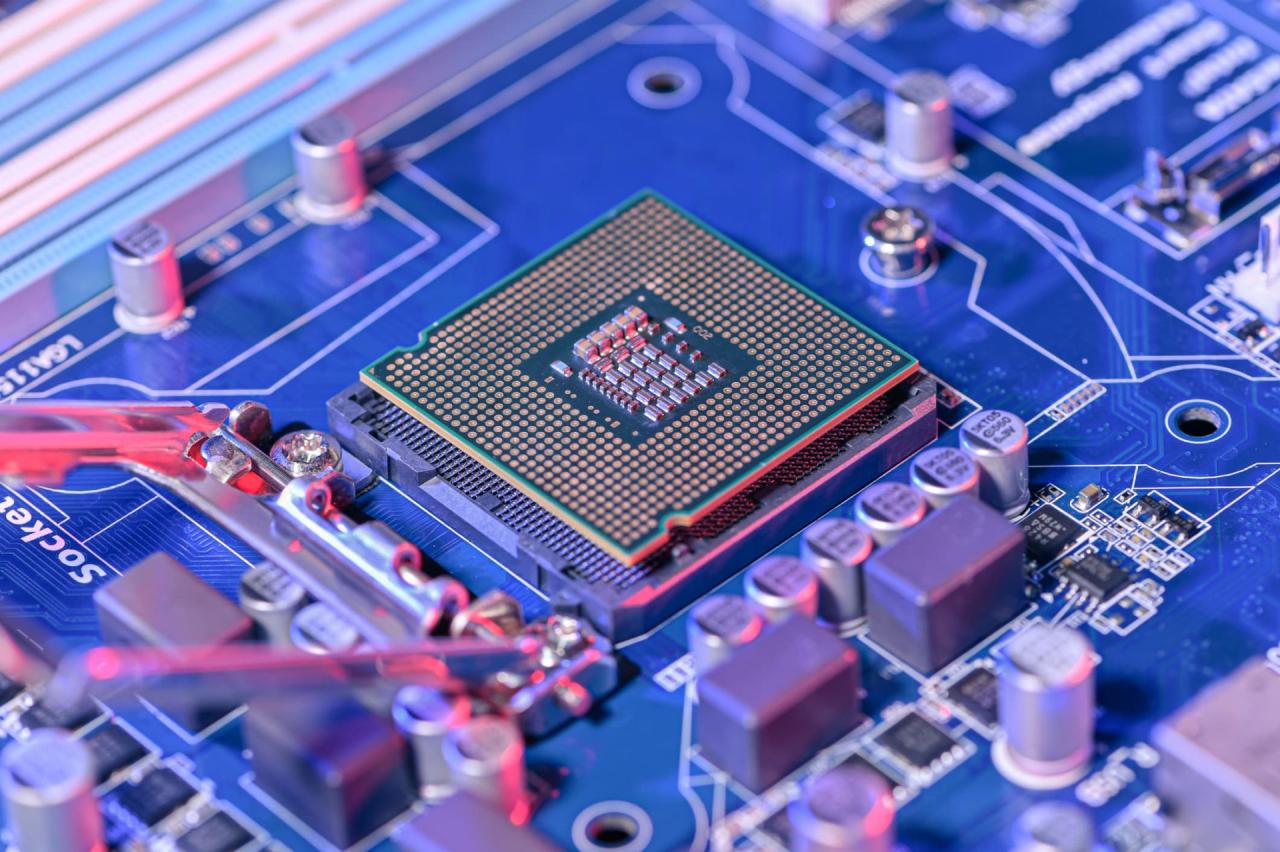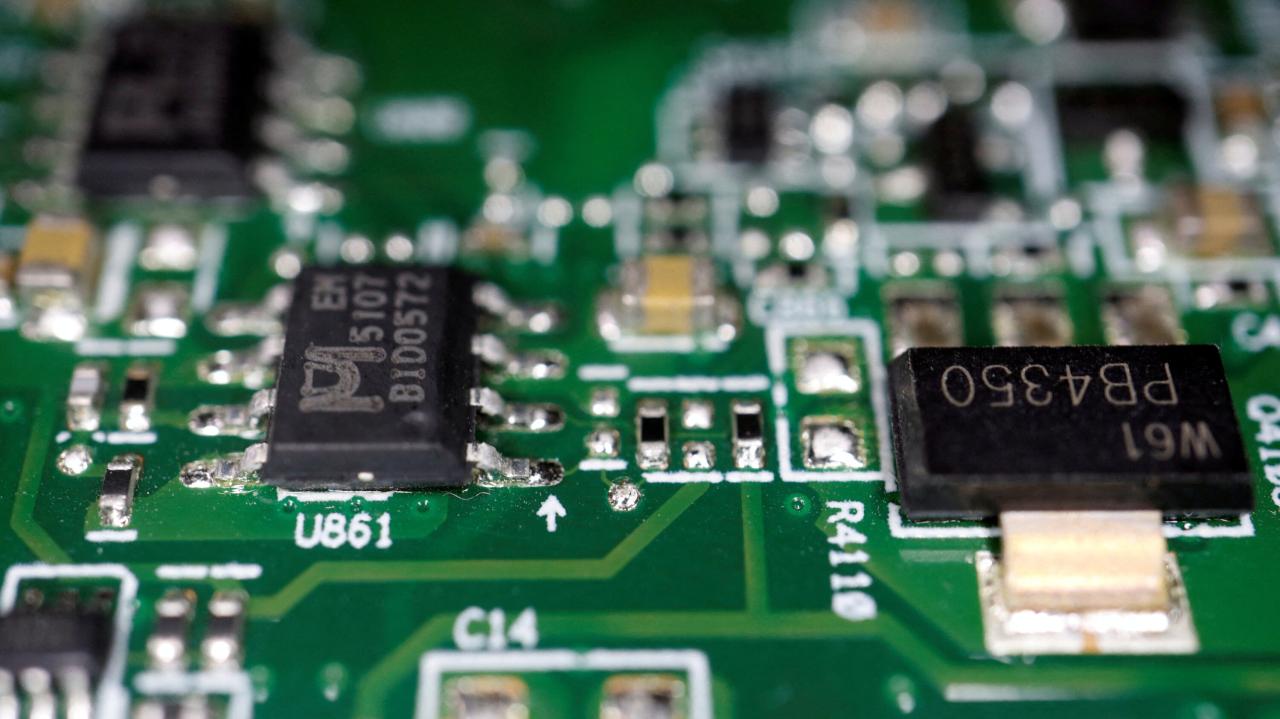Chip iPhone signifies a monumental leap in mobile technology, showcasing Apple’s relentless pursuit of innovation. As the backbone of each iPhone model, the evolution of chip technology not only enhances performance but also transforms user experience, paving the way for features that redefine what smartphones can do.
From the early days of the A-series chips to the cutting-edge designs of today, Apple has consistently outperformed competitors through significant advancements in processing power and efficiency. The chips play a vital role in multitasking capabilities, gaming graphics, and overall functionality, making the iPhone a preferred choice for tech enthusiasts and casual users alike.
Chip Technology in iPhone Models

The evolution of chip technology in iPhone models has been a cornerstone of Apple’s innovation, driving significant advancements in performance, efficiency, and user experience. Since the first iPhone was introduced in 2007, Apple has progressively enhanced its chip designs, shaping the smartphone industry along the way. The introduction of custom silicon has not only set benchmarks for speed and efficiency but has also established Apple’s A-series chips as leaders in mobile processing technology.
The significance of A-series chips in enhancing performance cannot be overstated. Each generation of these chips brings improvements in processing power, graphics performance, and energy efficiency. These innovations allow iPhones to perform complex tasks seamlessly, from gaming to augmented reality, while maintaining exceptional battery life. The A-series chips are designed specifically for Apple’s ecosystem, enabling optimized software and hardware integration that results in a smooth user experience.
Evolution of A-Series Chips
Since their debut, A-series chips have undergone remarkable transformations. The following highlights detail this evolution:
– A4 (2010): Introduced in the iPhone 4, the A4 was Apple’s first in-house processor, marking a shift from third-party chips. This dual-core design set the stage for future enhancements by delivering improved speed and energy efficiency.
– A6 (2012): Featured in the iPhone 5, the A6 chip showcased a significant leap in performance with its custom-designed architecture, providing up to twice the CPU and graphics performance compared to its predecessor.
– A8 (2014): The A8, found in the iPhone 6, introduced 64-bit architecture and enhanced graphics performance, making complex gaming applications and high-resolution video editing possible on mobile devices.
– A12 Bionic (2018): With the introduction of the A12 Bionic chip, Apple moved into a new era of machine learning and AI capabilities. This chip featured a dedicated Neural Engine, facilitating advanced tasks like facial recognition and real-time photo enhancement.
– A14 Bionic (2020): Launched with the iPhone 12, the A14 Bionic was the first chip in the industry built on a 5-nanometer process, resulting in greater performance and efficiency. It allowed for longer battery life and faster processing speeds, ensuring unparalleled user experiences in gaming and multitasking.
– A15 Bionic (2021): The A15 further refined the architecture, enhancing speed and efficiency, especially for tasks involving graphics and machine learning. The introduction of an improved Neural Engine allowed for smarter applications, particularly in photography and video processing.
– A16 Bionic (2022): Featured in iPhone 14 Pro models, the A16 Bionic chip focused on luxury performance with advanced power management, enabling features such as improved display technology and enhanced camera functionality.
Comparison of A-Series Chips and Competitors’ Chips
The competitive landscape of smartphone processors reveals significant differences between Apple’s A-series chips and those produced by competitors. This comparison highlights the unique advantages that the A-series offers:
– Performance Efficiency: Apple’s A-series chips consistently outperform competitors’ offerings, like Qualcomm’s Snapdragon series, particularly in benchmarks assessing single-core performance, which is crucial for everyday tasks. The unique architecture of A-series chips allows for high performance without excessive power consumption.
– Graphics Capabilities: The integrated graphics processing units (GPUs) in A-series chips are designed for high-performance tasks. For instance, the A14’s GPU architecture outpaces many Android counterparts, making iPhones superior in handling graphically intense applications and gaming experiences.
– Neural Processing: The A-series chips incorporate dedicated Neural Engines that significantly enhance machine learning tasks, such as image processing and voice recognition. Competitors like Samsung and Huawei are catching up, but Apple’s focus on integrating AI capabilities into everyday applications remains a distinguishing feature.
– Software Optimization: Apple’s control over both hardware and software allows for unparalleled optimization. iOS is designed to leverage the capabilities of A-series chips fully, resulting in seamless performance that often outstrips rivals that run on Android, where software and hardware are sourced from different entities.
In summary, the evolution of chip technology in iPhone models illustrates Apple’s commitment to performance, efficiency, and innovation. The A-series chips play a crucial role in maintaining this trajectory, setting the standard in the smartphone industry while continuously evolving to meet the demands of modern mobile applications.
Performance Impact on User Experience

The architecture of chips in iPhones plays a pivotal role in shaping the overall user experience. Enhanced processing power and efficiency directly contribute to smoother performance, making everyday tasks seamless and enjoyable. As Apple continues to innovate with each chip generation, users witness significant improvements that elevate their interaction with the device.
The latest chip architectures are designed to optimize performance across various functions, significantly enhancing user experience. Specifically, tasks such as gaming and multitasking benefit greatly from these advancements. With faster processing speeds and improved graphics capabilities, users can enjoy more immersive gaming experiences and efficient multitasking without lag or performance drops.
Gaming Experience and Graphics Performance
The evolution of Apple’s chip technology has introduced remarkable enhancements in gaming performance. The latest chips include powerful GPUs that allow for high frame rates and superior graphics rendering capabilities. This not only improves visual fidelity but also enhances the responsiveness of games.
Performance metrics highlight the capabilities of these new chips:
- A15 Bionic Chip: Introduced in the iPhone 13 series, this chip features a 4-core GPU, which allows for a 30% improvement in graphics performance compared to its predecessor, enabling smoother gameplay and stunning visuals.
- A16 Bionic Chip: Found in the iPhone 14 Pro, it offers a 50% greater memory bandwidth, allowing for more complex graphics processing and multitasking, which is crucial for demanding games that require high levels of graphical detail.
- Real-World Examples: Users playing AAA titles like “Genshin Impact” or “Call of Duty: Mobile” report significantly improved frame rates and graphical quality, with minimal overheating issues, thanks to advanced thermal management in newer chips.
Multitasking Capabilities
Multitasking is another area where the chip architecture has a profound impact on user experience. The efficiency of the processing units allows users to run multiple apps simultaneously without experiencing slowdowns.
Key points regarding multitasking improvements include:
- Performance Boost: The A16 Bionic chip’s high-performance cores are designed to handle demanding applications while efficiently managing background tasks, allowing users to switch between apps seamlessly.
- Enhanced RAM Management: Newer iPhones come equipped with increased RAM capabilities, which provide more memory for apps to run concurrently, reducing the likelihood of apps being force-closed.
- Real-Life Usage: Users have reported smoother experiences when streaming videos, browsing the web, and using productivity apps like Microsoft Office simultaneously, showcasing the robustness of Apple’s chip technology.
“The chip architecture not only enhances speed but also ensures a consistent and reliable performance across various applications, fundamentally transforming user interactions.”
Manufacturing and Supply Chain Considerations: Chip Iphone
The manufacturing and supply chain framework for iPhone chips is a complex interplay of various stakeholders, each contributing to the end product’s quality and availability. Apple’s reliance on a robust network of manufacturers and suppliers affects not just production schedules but also the overall performance of its devices. Understanding these dynamics is essential for grasping how external factors impact the supply of iPhone chips.
Primary Manufacturers of iPhone Chips
Apple collaborates with a select group of primary manufacturers to produce its chips, which are crucial for the performance of its devices. The main players include:
- TSMC (Taiwan Semiconductor Manufacturing Company): As the leading semiconductor foundry, TSMC plays a pivotal role in manufacturing Apple’s A-series and M-series chips. Their advanced fabrication processes help achieve high performance and energy efficiency.
- Samsung Electronics: Besides being a competitor in the smartphone market, Samsung supplies Apple with chips, particularly for memory and display technologies, contributing significantly to the overall iPhone architecture.
- Qualcomm: While Apple’s recent moves towards developing its own modems have reduced reliance on Qualcomm, the latter still provides critical components for connectivity, particularly in older models.
- Broadcom: This company supplies various wireless communication chips that contribute to connectivity features in iPhones, enhancing user experience through rapid data transmission.
Supply Chain Challenges in iPhone Chip Production
The supply chain for iPhone chips faces multiple challenges, significantly impacting production timelines and availability. Key issues include:
- Global Semiconductor Shortages: The chip industry has been grappling with shortages, exacerbated by the COVID-19 pandemic, which has disrupted production and logistics. This scarcity has led to increased lead times for chip delivery and affected Apple’s ability to meet consumer demand.
- Geopolitical Tensions: Ongoing trade disputes, especially between the U.S. and China, have created uncertainty in supply chains. Restrictions on technology transfer can hinder access to critical components, affecting production schedules.
- Natural Disasters: Events such as earthquakes, floods, or fires in manufacturing regions can lead to unexpected disruptions in chip supply. For instance, the 2021 fire at a semiconductor plant in Japan significantly impacted multiple tech companies’ productions, including Apple.
- Logistics and Transportation Issues: Increased shipping costs, port congestion, and delays in freight services contribute to the overall inefficiency within the supply chain, delaying the delivery of essential materials needed for chip manufacturing.
Impact of Global Events on Chip Availability
Global events have a profound impact on the availability of chips for Apple, which can ultimately influence the company’s product launch timelines and market performance. Notable factors include:
- Pandemic-Related Disruptions: The COVID-19 pandemic has led to factory shutdowns and reduced workforce availability, affecting chip production rates. The subsequent surge in demand for electronics during lockdowns further strained the supply chain.
- Trade Policies: Changes in trade policies can lead to tariffs that increase the cost of manufacturing or importing chips, affecting overall pricing strategies for Apple products.
- Climate Change Initiatives: Increasing pressure for sustainable manufacturing practices may lead to longer development times for new technologies, thus affecting the pace at which new iPhone chips can be produced and released.
- Technological Advancements: Advances in manufacturing technologies can lead to improved chip production efficiencies, but these transitions often require significant investment and time, potentially leading to short-term disruptions during the transition phase.
Future Trends in Chip Development for iPhones

The evolution of chip technology in iPhones continues to shape not only the devices themselves but also the user experience as a whole. As we look ahead, several innovations are poised to redefine performance, integration with advanced technologies, and sustainability in manufacturing.
Innovations in Chip Technology
Future iPhone models are expected to incorporate several cutting-edge innovations in chip technology. These advancements will likely enhance processing power while optimizing energy efficiency. Notable trends include:
– Integration of 5G and Beyond: Future chips may seamlessly integrate advanced 5G capabilities, enabling faster data rates and better connectivity. This will allow apps and services to leverage real-time data effectively, enhancing user experiences in streaming, gaming, and augmented reality.
– On-Device AI Processing: With the growing emphasis on machine learning, future chips will likely feature dedicated AI processing units. These chips can handle complex algorithms directly on the device, minimizing latency and improving privacy, as less data will need to be sent to cloud services.
– Modular Chip Designs: The potential for modular chip designs may emerge, allowing for easy upgrades of specific components without replacing the entire device. This innovation can lead to longer device lifespans and reduced electronic waste.
Influence of Machine Learning and AI on Chip Design, Chip iphone
The influence of machine learning and AI on chip design is rapidly increasing. As applications become more reliant on these technologies, future iPhones may see chips specifically optimized for AI tasks.
– Neural Processing Units (NPUs): Future iPhones will likely incorporate advanced NPUs that are designed to accelerate machine learning tasks. This can significantly enhance features like facial recognition, image processing, and voice assistance, providing users with faster and more accurate responses.
– Adaptive Performance Scaling: Chips may feature adaptive performance scaling, which uses AI to optimize processing power based on user behavior. For example, during high-demand tasks, the chip can allocate more resources, while conserving energy during routine operations.
“The integration of AI into chip design enables a more personalized and efficient user experience, turning devices into intelligent companions.”
Sustainability Efforts in Chip Production
Apple’s commitment to sustainability is likely to influence future chip production practices. The company’s focus on reducing its carbon footprint and promoting environmental responsibility will shape both materials and manufacturing processes.
– Use of Recycled Materials: Future chip production could increasingly utilize recycled materials, significantly reducing the demand for virgin resources. For instance, Apple has already made strides in using recycled aluminum in its products and is expected to extend such practices to chip components.
– Energy-Efficient Manufacturing: Manufacturing processes will likely shift towards energy-efficient methods, utilizing renewable energy sources. This transition can help decrease the overall environmental impact of chip production, aligning with Apple’s broader sustainability goals.
– Lifecycle Analysis: Apple may implement rigorous lifecycle analysis for its chips, assessing the environmental impact at every stage of production. This approach ensures that sustainability is a core consideration from design to disposal.
These advancements in chip technology, combined with the integration of machine learning and a commitment to sustainability, are set to transform the iPhone experience in the coming years, positioning Apple as a leader in innovation and environmental stewardship.
Commonly Asked Questions
What are A-series chips?
A-series chips are Apple’s proprietary processors that power iPhone models, enabling high performance and energy efficiency.
How often does Apple release new chips for the iPhone?
Apple typically releases new A-series chips annually alongside new iPhone models, introducing enhancements each time.
What challenges does Apple face in chip production?
Apple faces supply chain challenges, including raw material shortages and global events that impact chip availability.
How do chips affect gaming on iPhones?
Chips enhance gaming performance by improving graphics rendering and processing speed, delivering a smoother gameplay experience.
Will future iPhones use AI in chip design?
Yes, future iPhones are expected to incorporate AI to enhance chip design, improving efficiency and processing capabilities.
The Samsung S 10 has garnered attention for its sleek design and powerful performance, making it a favorite among tech enthusiasts. With its impressive camera capabilities and vibrant display, users can capture stunning photos and enjoy immersive media experiences. This flagship device showcases Samsung’s commitment to innovation and quality in the smartphone market.
Moving forward, the Samsung S 19 is anticipated to elevate the smartphone experience even further. Speculated features include enhanced processing power and advanced camera technology, promising to meet the demands of modern users. As Samsung continues to push boundaries, the S 19 is set to redefine what we expect from mobile devices.